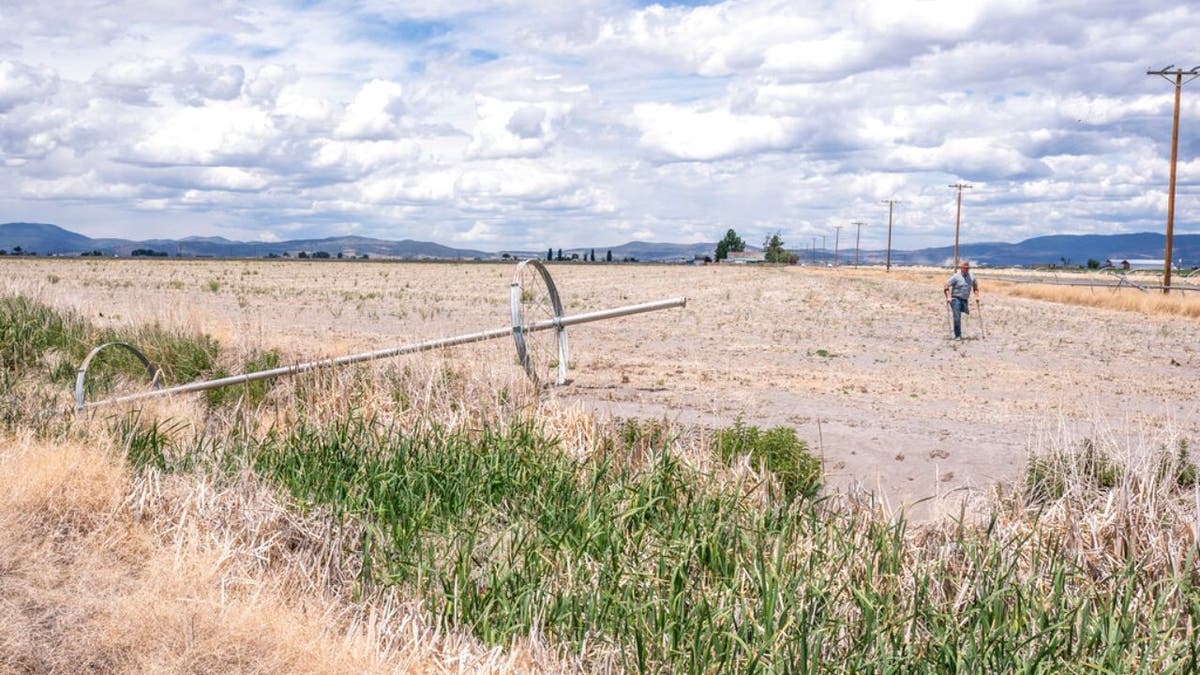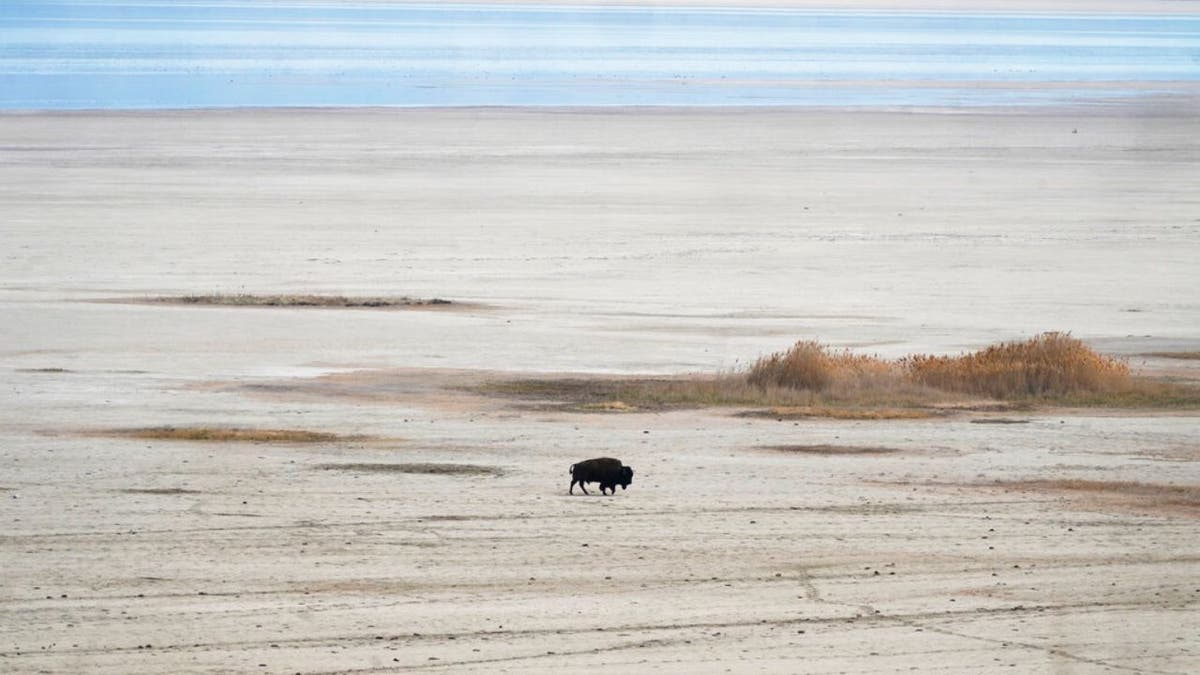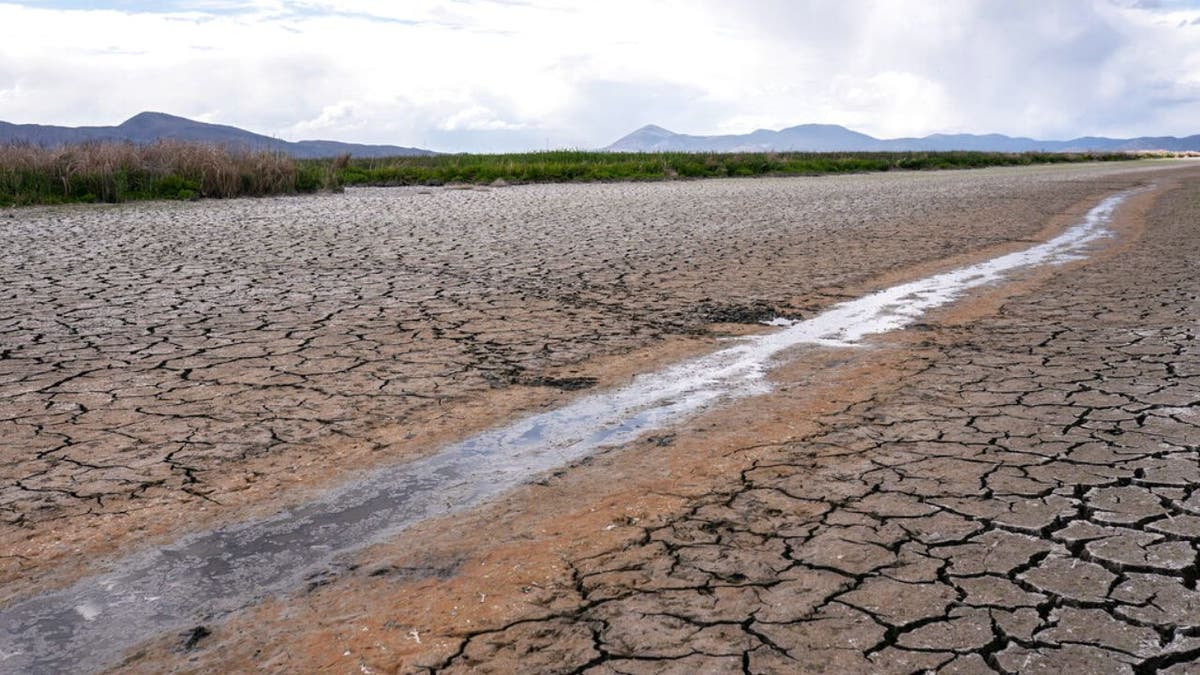Western farmers struggling with severe drought
Dairy farmer Ron Gibson discusses the drought that farmers are dealing with in the western U.S.
As the western United States continues to face a months-long bout with extreme drought, American farmers are feeling catastrophic effects to their livelihoods.
Ron Gibson manages 1,500 head of cattle in Northern Utah but may soon lack the resources to sustain his herd. Scorching temperatures and the absence of rain have created a depletion in feed supply for cattle farmers like Ron. With watering rights in his area cut about 70% in efforts to preserve the water supply, more farmers are forced to outsource their feed, and the high demand has driven up the price four times greater than usual.
"When we look at the amount of impact that this kind of disaster is going to have on the country, it's going to equal or surpass the amount of people that that were impacted by Hurricane Katrina," he told Fox News.
But unlike the immediate blow of a hurricane, this kind of natural disaster drags throughout prolonged periods of time, running its victims through the dirt.

Ben DuVal walks past a dry irrigation pipe in a field he had rented for crops this year but was unable to plant due to the water shortage, on Wednesday, June 9, 2021, in Tulelake, Calif. (AP Photo/Nathan Howard)
MORE THAN 90% OF WEST THREATENED BY HISTORIC DROUGHT THAT MAY STRETCH THROUGH SUMMER
"It’s a slow-moving disaster – it's one that's been building," Gibson said. "I mean, the effects that we're feeling today were pronounced when we didn't get storms this winter seven or eight months ago."
If farmers cannot feed their stock, they may be forced to sell large percentages of their cattle at a reduced price.
"How [could anyone] buy all those cows back?" Gibson retorted at the prospect of selling cattle, arguing that it would drive farmers straight out of business. "When they’re out of business, they’re not coming back."
As the Utah Farm Bureau president, Gibson is calling on the USDA and Congress to enact relief and to do so quickly. He noted that it is local, family farms that will suffer the most from this ongoing disaster, describing them as being "at their wits’ end."

A lone bison walks along the receding edge of the Great Salt Lake on his way to a watering hole on April 30, 2021, at Antelope Island, Utah. The lake's levels are largely expected to hit a 170-year low this year. It comes as the drought has the U.S. West bracing for a brutal wildfire season. (AP Photo/Rick Bowmer)
HISTORIC DROUGHT IN WEST BRINGS PLAGUE OF GRASSHOPPERS
"Some people are telling us that it’s since 1930 since we’ve seen anything like this," Gibson warned.
John Moore, a fourth-generation crop farmer from Kern County, California, highlighted the misunderstanding lawmakers have toward the agricultural community. In his mind, heeding to some Trump-era water policies would’ve changed the entire landscape of how farmers face droughts like these.
"We have this incredible infrastructure in California for water conveyance," Moore told Fox News, outlining how water is collected from snowmelt in the Sierra Mountains and transported down into the delta region. But according to Moore, outdated state conservation policies have diminished water reservoir access for farmers below the delta.
CLICK HERE TO GET THE FOX NEWS APP
"The Trump administration came out with new biological opinions, which would allow more water to travel south of the delta," he said. "Obviously, the Trump administration and the California administration did not get along. I think they like suing each other more than they like to have actual productive conversations. And so that Trump-era decision has not been utilized to the fullest."
As a result, farmers like Moore have their water allotment capped at rates lower than many crops require, putting several in dire straits when facing a drought of these proportions.

A small stream runs through the dried, cracked earth of a former wetland near Tulelake, Calif., Wednesday June 9, 2021. (AP Photo/Nathan Howard)
When asked what the Biden administration could do to alleviate the water crisis, Moore advised that "encouraging the state to make commonsense decisions, and encouraging our governor to pick the right people to serve on our state water boards, to serve as our water commissioner," would produce meaningful solutions.
"These government and governor-chosen positions are really the levers of power, and they’re failing the California population, specifically the farming population," he said.


